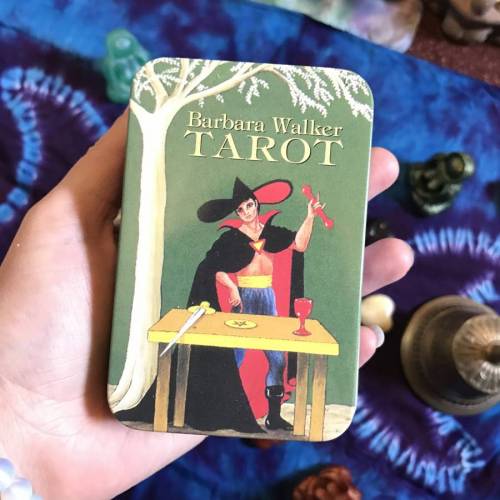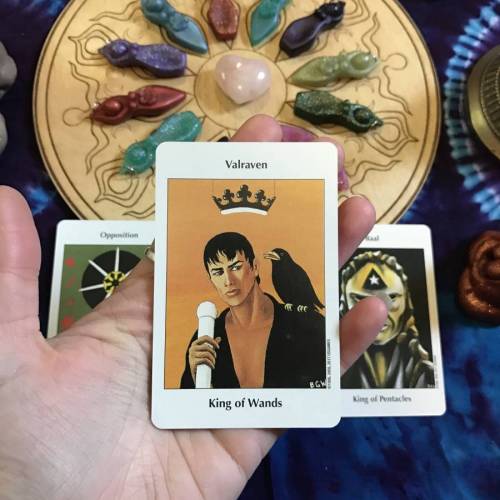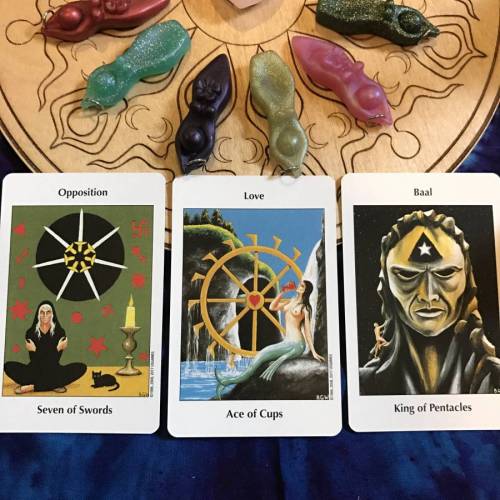Goddess Centered Practice
In the woods behind my house rest a collection of nine large flat rocks. Daily, I walk down to these “priestess rocks” for some sacred time alone to pray, meditate, consider, and be. Often, while in this space, I open my mouth and poetry comes out. I’ve come to see this experience as "theapoetics"—experiencing the Goddess through direct “revelation,” framed in language. As Stanley Hopper originally described in the 1970’s, it is possible to “…replace theology, the rationalistic interpretation of belief, with theopoetics, finding God[dess] through poetry and fiction, which neither wither before modern science nor conflict with the complexity of what we know now to be the self.” Theapoetics might also be described, “as a means of engaging language and perception in such a way that one enters into a radical relation with the divine, the other, and the creation in which all occurs.”
Deck Review: Barbara Walker Tarot
This review was first published in the April 2017 issue of SageWoman Magazine (issue #91)
The newly re-released Barbara Walker Tarot is rich with dedicated, attentive symbolism. A very no-nonsense deck, the suite cards as well as the court cards are 
The Barbara Walker Tarot draws inspiration from feminist theory as well as myths, images, and deities from around the world. The court cards portray goddesses and gods from a variety of cultures. A working understanding of the mythology involved with the deck would be helpful, and perhaps even necessary, before engaging with this deck fully and seeing more in it than the initially disturbing images experienced at first glance.
The deck is packaged in a great little tin and is a wonderfully portable small size that fits neatly in the hand. I enjoy small decks that are easy to handle and this deck is very comfortable to hold and work with. The cards are just 2 ¼ by 3 ¾. It is a full Tarot deck of 78 cards in a traditional tarot structure. The deck comes with a basic black and white bare bones booklet that also fits inside the small tin with the deck.
The images on each card are bordered with white, which contains text. In addition to the title of the cards, each suite card also has a single theme printed at the top, which I find helpful for detailed spreads and interpretations. These themes also guide your original impression of and interpretation of the card. The triple goddess colors of black, white, and red dominate the color palette of the cards, with blue, yellow, orange, grey, and brown also appearing.
Originally published in 1986 and reprinted now in 2017, the Barbara Walker Tarot stands the test of time and could be a valuable addition to a tarot connoisseur’s library. I would not suggest this as a beginners or starter tarot deck. Experienced Tarot users who enjoy grappling with darker themes and challenging images with find rich opportunities for contemplation and exploration in this deck. While perhaps unintentionally “dark,” I found the overall vibe of the Barbara Walker Tarot off-putting. This is not a deck for the squeamish or faint of heart or “fluffy” of persuasion. The themes of each card are overwhelmingly stark—sorrow, oppression, opposition, cruelty, disillusion—and require a deft hand and a willingness to dig into grim themes and images.
Review by Molly Remer
Barbara Walker, US Games Systems
Second edition, 2017 (first published in 1986)
Comments
-
Please login first in order for you to submit comments



















